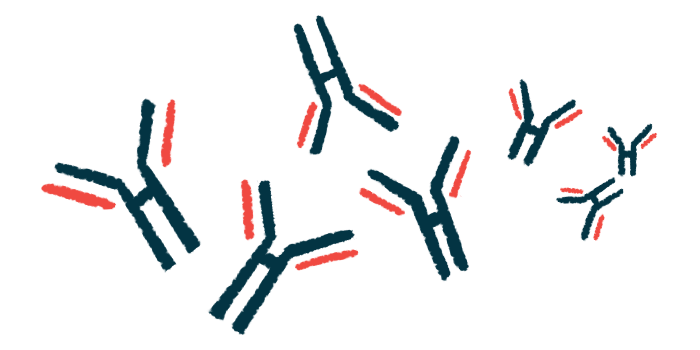Antibodies to ERT may not limit response in LOPD
Researchers review 17 studies of adults with late-onset Pompe disease
Written by |

Nearly 1 in 4 adults with late-onset Pompe disease develop high levels of antibodies against enzyme replacement therapy (ERT). However, that does not mean they have a reduced response to treatment, a systematic review study has revealed.
The findings are in line with previous data from patients with childhood-onset Pompe disease showing that the presence of inhibitor antibodies was not likely to stop ERT from working properly.
The study, “Are Anti-rhGAA Antibodies a Determinant of Treatment Outcome in Adults with Late-Onset Pompe Disease? A Systematic Review,” was published in the journal Biomolecules.
Pompe disease is caused by mutations in GAA, a gene that contains instructions for making an enzyme that breaks down a complex sugar molecule called glycogen into glucose, a simpler sugar.
When glycogen is not broken down, it can build up to toxic levels in tissues, particularly muscles. This causes a range of symptoms, from muscle weakness to difficulty breathing, that can manifest in the first year of life (infantile-onset) or later in life (late-onset).
Treatment with ERT involves intravenous, or into-the-vein, infusions of a recombinant (lab-made) form of the human GAA enzyme, called rhGAA. However, the body may form antibodies against rhGAA, which theoretically could stop ERT from working properly.
“A considerable individual variation in response to ERT is seen,” researchers in the Netherlands wrote. To find out if this variation may be related to the presence of inhibitor (neutralizing) antibodies, they searched the literature for studies reporting on treatment outlook.
They identified 17 studies including a total of 443 adults with late-onset Pompe disease who were treated with Lumizyme (alglucosidase alfa), the first approved ERT for Pompe disease.
Multiple studies
In 10 of the studies, high levels of antibodies against rhGAA were found in up to 33% of patients. Individual data were available for a total of 73 patients, with 17 (23%) of them having high antibody levels.
Six studies looked at a possible link between high antibody levels and treatment outlook, or outcome. “Four studies did not find an effect of antibody titre [levels] on treatment outcome,” whereas “two studies did find an effect,” the researchers wrote.
In one study, patients who tested negative for those antibodies experienced a greater improvement in their Medical Research Council score, a measure of muscle strength, than those who tested positive.
In another study, one patient stopped ERT due to a worsening of symptoms possibly occurring as a result of high antibody levels. “In only two cases were high-sustained neutralising antibodies reported to interfere with treatment efficacy,” the researchers wrote.
Two studies also looked at a possible link between antibodies against rhGAA and the occurrence of infusion-related reactions, such as rash or allergic reactions. One study found no link among 59 patients followed for 18 months. In the other study, conducted over 73 participants and a median time in ERT of 40 months, the higher the antibody levels, the more likely patients were to have infusion-related reactions.
Exploring how the antibodies affect ERT
While many adults with late-onset Pompe disease developed antibodies against ERT, it is not clear those antibodies affect how well the treatment works.
However, “in a minority of patients, a clinical decline related to (possible) interference of anti-rhGAA antibodies was described,” the researchers wrote.
“Determining anti-rhGAA antibody titres should be part of the standard follow-up,” particularly if symptoms appear to be getting worse or if the patients have infusion-related reactions, they noted.
Among the study’s limitations, the investigators mentioned different definitions of high antibody levels among included studies.






